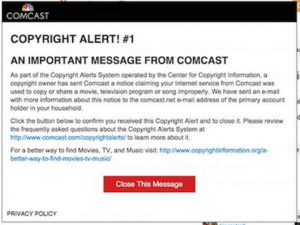Update: Thought I’d put a list of Senators people should thank for voting against CISA.
GOP: Crapo, Daines, Heller, Lee, Risch, and Sullivan. (Paul voted against cloture but did not vote today.)
Dems: Baldwin, Booker, Brown, Cardin, Coons, Franken, Leahy, Markey, Menendez, Merkley, Sanders, Tester, Udall, Warren, Wyden
Just now, the Senate voted to pass the Cyber Information Sharing Act by a vote of 74 to 21. While 7 more people voted against the bill than had voted against cloture last week (Update: the new votes were Cardin and Tester, Crapo, Daines, Heller, Lee, Risch, and Sullivan, with Paul not voting), this is still a resounding vote for a bill that will authorize domestic spying with no court review in this country.
The amendment voting process was interesting of its own accord. Most appallingly, just after Patrick Leahy cast his 15,000th vote on another amendment — which led to a break to talk about what a wonderful person he is, as well as a speech from him about how the Senate is the conscience of the country — Leahy’s colleagues voted 57 to 39 against his amendment that would have stopped the creation of a new FOIA exemption for CISA. So right after honoring Leahy, his colleagues kicked one of his key issues, FOIA, in the ass.
More telling, though, were the votes on the Wyden and Heller amendments, the first two that came up today.
Wyden’s amendment would have required more stringent scrubbing of personal data before sharing it with the federal government. The amendment failed by a vote of 55-41 — still a big margin, but enough to sustain a filibuster. Particularly given that Harry Reid switched votes at the last minute, I believe that vote was designed to show enough support for a better bill to strengthen the hand of those pushing for that in conference (the House bills are better on this point). The amendment had the support of a number of Republicans — Crapo, Daines, Gardner, Heller, Lee, Murkowksi, and Sullivan — some of whom would vote against passage. Most of the Democrats who voted against Wyden’s amendment — Carper, Feinstein, Heitkamp, Kaine, King, Manchin, McCaskill, Mikulski, Nelson, Warner, Whitehouse — consistently voted against any amendment that would improve the bill (and Whitehouse even voted for Tom Cotton’s bad amendment).
The vote on Heller’s amendment looked almost nothing like Wyden’s. Sure, the amendment would have changed just two words in the bill, requiring the government to have a higher standard for information it shared internally. But it got a very different crowd supporting it, with a range of authoritarian Republicans like Barrasso, Cassidy, Enzi, Ernst, and Hoeven — voting in favor. That made the vote on the bill much closer. So Reid, along with at least 7 other Democrats who voted for Wyden’s amendment, including Brown, Klobuchar, Murphy, Schatz, Schumer, Shaheen, and Stabenow, voted against Heller’s weaker amendment. While some of these Democrats — Klobuchar, Schumer, and probably Shaheen and Stabenow — are affirmatively pro-unconstitutional spying anyway, the swing, especially from Sherrod Brown, who voted against the bill as a whole, makes it clear that these are opportunistic votes to achieve an outcome. Heller’s vote fell just short 49-47, and would have passed had some of those Dems voted in favor (the GOP Presidential candidates were not present, but that probably would have been at best a wash and possibly a one vote net against, since Cruz voted for cloture last week). Ultimately, I think Reid and these other Dems are moving to try to deliver something closer to what the White House wants, which is still unconstitutional domestic spying.
Richard Burr seemed certain that this will go to conference, which means people like he, DiFi, and Tom Carper will try to make this worse as people from the House point out that there are far more people who oppose this kind of unfettered spying in the House. We shall see.
For now, however, the Senate has embraced a truly awful bill.
Update, all amendment roll calls
Wyden: 41-55-4
Heller: 47-49-4
Leahy: 37-59-4
Franken: 35-60-5
Coons: 41-54-5
Cotton amendment: 22-73-5
Final passage: 74-21-5



